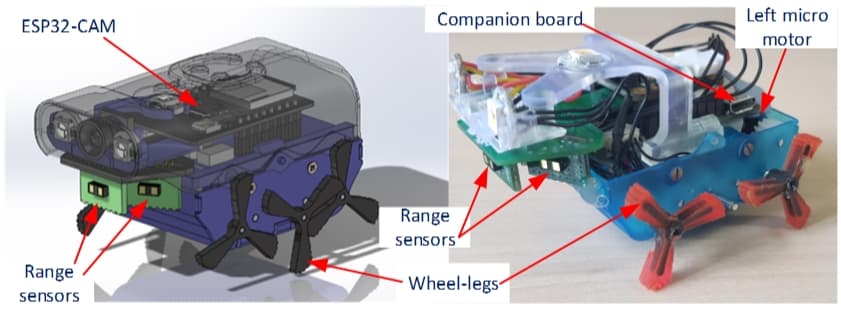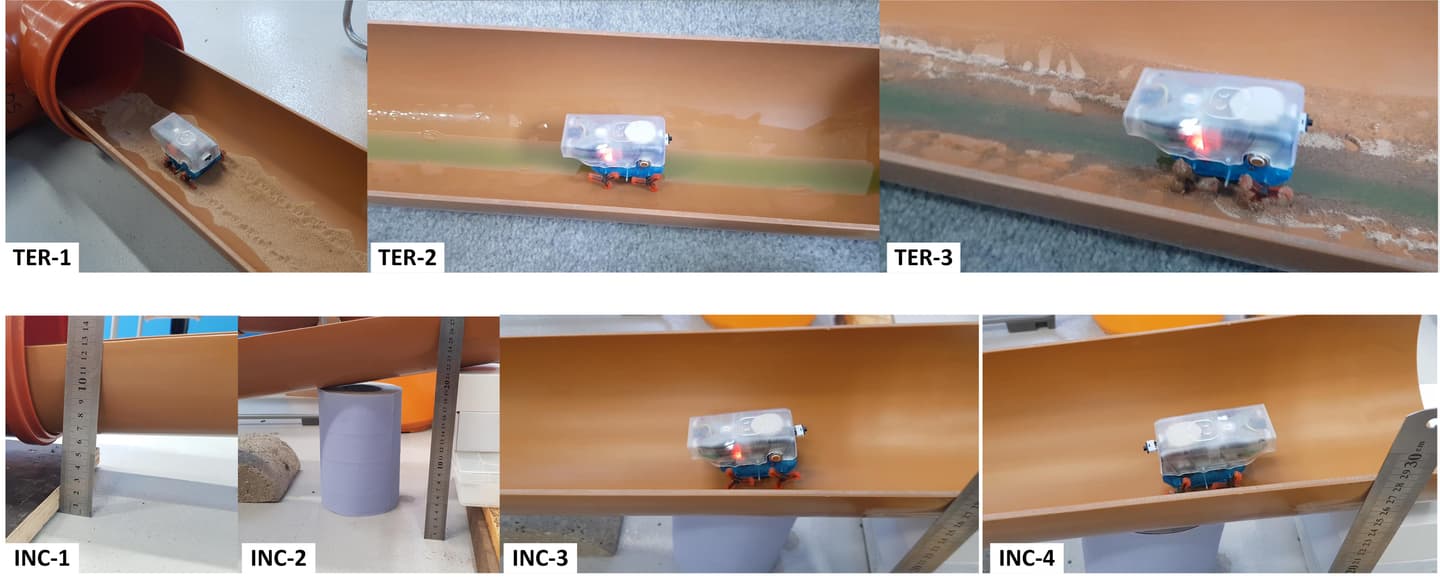It was just this week that we heard about the SPD1, a spider-inspired robot designed to inspect sewer lines. Well, it looks like the bot won’t be alone down there, as the recently announced Joey robot is designed to do exactly the same thing.
Joey was developed at Britain’s University of Leeds – by a team led by Prof. Netta Cohen and Dr. Thanh Luan Nguyen – as part of the larger international Pipebots program.
The 70-gram (2.5-oz) robot is “small enough to fit in the palm of your hand,” and can autonomously navigate through interconnected pipes as narrow as 7.5 cm (3 in) in diameter. It moves along on 3D-printed, three-spoked “wheel-legs,” which allow it to both traverse smooth sections and step over obstacles. The materials cost of each prototype is about £300 (US$357) – that figure would drop if they were manufactured on a commercial scale.
Joey is also equipped with range-finding sensors that let it gauge the distance to walls, junctions and corners, without having to turn on its more battery-hungry camera and spotlights. That said, when its onboard microprocessor does detect a problem in the pipes, the robot will power up the lights and camera (along with a microphone) to document the issue.

Frontiers
Cohen has informed us that Joey is completely autonomous, requiring no connection to an operator or external power source. In lab tests, it was able to independently find its way through a pipe network that included a T-junction, a left and right corner, a dead end, an obstacle, and three straight sections. On average, it could cover 1 meter (3.3 feet) of the network in 45 seconds.
Joey also successfully climbed slopes with gradients similar to those in real-life sewer lines, plus it was able to slog through both loose sand and dishwashing liquid (the latter simulating gelatinous goo). It’s designed to return to a home base equipped with a charging station, when its battery gets low.

Frontiers
Plans call for future versions of Joey to be completely waterproof, able to turn themselves back over when flipped upside-down, and possibly even capable of fixing the sewer problems that they detect.
“It’s not clear whether the very same Joeys would be capable of doing repairs (certainly not this current prototype) but our long-term vision is indeed that robots do everything,” Cohen told us. “In case future Joeys can’t handle repairs, we envision that they would ‘call’ other robots to perform the repairs.”
It is also possible that 10 or 20 years down the road, multiple Joeys might be carried aboard a larger “Kanga” mother robot, which is currently under development. Although the Kanga would be restricted to relatively wide pipes, its larger battery would allow it to travel farther down the sewer lines, sending the Joeys out to inspect the narrower pipes and report back on what they find.
A paper on the technology was recently published in the journal Frontiers in Robotics and AI.
Source of Article